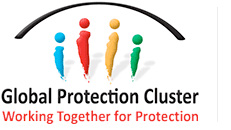MINE ACTION PILLARS
Clearance
Mine clearance is one of the five core components of mine action. In its broad sense, it includes surveys, mapping and minefield marking, as well as the actual clearance of mines from the ground. This range of activities is also sometimes referred to as “demining”.
Mine clearance aims to clear land so that civilians can return to their homes and their everyday routines without the threat of landmines and unexploded remnants of war (ERW), which include unexploded ordnance and abandoned explosive ordnance. This means that all the mines and ERW affecting the places where ordinary people live must be cleared, and their safety in areas that have been cleared must be guaranteed. Mines are cleared and the areas are thoroughly verified so that they can say without a doubt that the land is now safe, and people can use it without worrying. The aim of humanitarian demining is to restore peace and security at the community level.
Explosive Ordnance Risk Education
Explosive Ordnance risk education refers to activities aimed at reducing the risk of injury from mines and unexploded ordnance by raising awareness and promoting behavioural change through public-information campaigns, education and training, and liaison with communities.
Risk education ensures that communities are aware of the risks from mines, unexploded ordnance and/or abandoned munitions and are encouraged to behave in ways that reduce the risk to people, property and the environment. Objectives are to reduce the risk to a level where people can live safely and to create an environment where economic and social development can occur free from the constraints imposed by landmine and ERW contamination.
Risk education, along with demining, contributes to limiting the risk of physical injury from mines and unexploded ordnance that already contaminates the land. Advocacy and the destruction of landmine and stockpiles focus on preventing future use of mines.
An EORE advisory group was established in 2019 to increase the quality and coverage of EORE programmes, promoting effective behaviour change strategies, strengthening the cadre of EORE experts, addressing contextual sensitivities, advocating to member states including donors, and securing buy-in from highest levels on the importance of coordination.
Victim Assistance
Victim assistance is a core component of mine action and an obligation of States Parties under the Antipersonnel Mine Ban Treaty. Article Six of the Treaty states that “Each State Party in a position to do so shall provide assistance for the care and rehabilitation, and social and economic reintegration, of mine victims and for mine awareness programs.” Protocol V on explosive remnants of war contains a similar provision in its Article 8. Also article 5 in the Convention on Cluster Munitions sets out obligations regarding victim assistance for states members to the convention. Victim assistance is a set of concrete actions to meet the immediate and long-term needs of mine/ERW victims, their families, mine-affected communities and persons with disabilities. Victim assistance includes, but is not limited to, information management systems; emergency and continuing medical care; physical rehabilitation; psychosocial support and social inclusion; economic reintegration; and laws and public policies that promote effective treatment, care and protection for all disabled citizens, including landmine victims, with a human rights perspective.
Read our KEY messages on Victim Assistance.
According to The International Mine Action Standards (IMAS), “VA (Victim Assistance) requires a long-term commitment. As such, the ultimate responsibility to provide services for direct and indirect EO victims rests with State entities such as ministries responsible for health, social affairs, education, labour, human rights and social protection.”
Stockpile Destruction
Stockpiled antipersonnel landmines far outnumber those actually laid in the ground. In accordance with Article 4 of the anti-personnel mine-ban treaty, State Parties must destroy their stockpiled mines within four years after their accession to the convention.
There are many options available to states in destroying their stockpiles. Stockpiles are usually destroyed by the military, but an industrial solution can also be employed. The techniques used vary depending on the make-up of the mines and the conditions in which they are found. The complete destruction cycle involves aspects such as transportation and storage, processing operations, equipment maintenance, staff training and accounting, as well as the actual physical destruction.
Advocacy
Advocacy refers to activities undertaken to mobilize support for mine action and to convince Member States to accede, ratify and implement the Anti-Personnel Mine Ban Convention, the Convention on Cluster Munitions, the Convention on Certain Conventional Weapons and other relevant international agreements such as the Convention on the Rights of Persons with Disabilities.
Last Updated: 22 April 2021
GLOBAL COORDINATION CONTACTS
Mr. Bruno DONAT
Global Coordinator, Mine Action Area of Responsibility (MA AoR)
Chief, UNMAS Geneva
Phone Number: +41 22 917 1779
unmasgeneva@un.org
Ms. Hannah Rose HOLLOWAY
Co-Coordinator, Mine Action Area of Responsibility (MA AoR)
Humanitarian Disarmament and Peacebuilding (HDP) Coordinator – DRC Geneva Representation
Phone Number: +41 79 191 4784
hannah.holloway@drc.ngo
danishdemininggroup.dk / drc.dk
HDP is a Core Sector and Mine Action unit within Danish Refugee Council
Ms. Christelle LOUPFOREST
Deputy Global Coordinator, Mine Action Area of Responsibility (MA AoR)
Liaison Officer, UNMAS Geneva
Phone Number: +41 22 917 4741
loupforest@un.org
